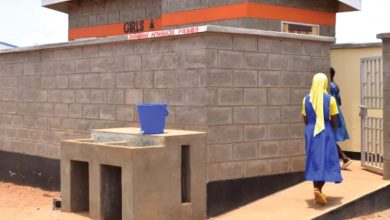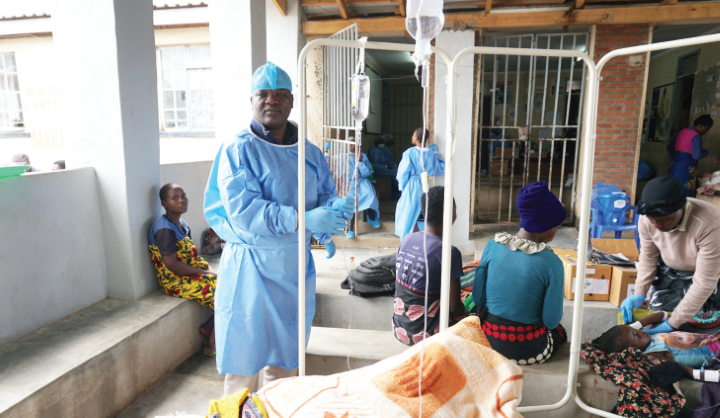Denied maternal health care

When President Joyce Banda ascended to power in April 2012, she took a critical step and made the Safe Motherhood Programme a focus of her presidency in order to reduce Malawi’s high maternal mortality rates.
In line with that policy, on August 7 2013 the President inaugurated a K125 million (about $312 500) Majete 1 Epicentre which has several facilities, including a maternity wing, at Chibwalizo in the area of Traditional Authority Chapananga in Chikhwawa which would service 21 villages. But is this the relief that women in this area need?
Alena Khirisitofa, a 31-year-old mother of two from T/A Chapananga’s area in Chikhwawa was hit with a double edged sword due to child birth complications. She lost her baby, had her womb removed and almost lost her life.
“It was only the hand of God which could have saved me that night,” she says amidst tears, thankful that she is able to see her other two children grow.
“I was seven months pregnant when my legs started swelling. I couldn’t get to the hospital quickly because it was raining at the time and the road was impassable. Therefore, I went to see azamba (traditional birth attendant) who told me to wait as swelling is part of pregnancy,” she said.
She added that after a week, she started bleeding. That is when her husband found a means to get her to the health centre, from where an ambulance was called to take her to the district hospital. The ambulance only came a day later.
“I waited for a long time for the ambulance to come and I was getting weak. At the hospital they performed a Caesarean section on me and said my baby had died and my womb was also removed because it had been infected,” said Khirisitofa.
Khirisitofa’s case is not isolated. In the area where she comes from, the right to health for many women is constantly infringed on due to several factors.
As the World Health Organisation states: “A rights perspective transforms the development discourse. Health for the poor is no longer about charity of benevolence, or a question of purchasing power. Instead it is an entitlement of everyone by virtue of being born human.”
Chapananga is a hard to reach area in Chikhwawa. With a distance of 45 kilometres from the district hospital, the area is only accessible in dry months, and totally impassable during the rainy season.
“The leading cause of death for women in Chikhwawa is bleeding. Most women who die from such areas come to the hospital when it’s too late and we cannot do anything, and we lose both the mother and child,” said a senior health official at the district hospital who refused to be named.
According to health officials at the district, Chapananga has a difficult terrain to access from the main hospital that sometimes they have to go through Mwanza.
“It becomes difficult to access pregnant women so that they are given the right care. For instance, this year our budget for the hospital was cut down to K345 million [about $862 500] from the K900 million [about $2.2m] which we had presented. This means we will only take care of routine things which do not cover expenses such as fuel,” said the officer.
“We are creating demand for use of health facilities but we don’t have the staff to help those women,” added the official.
The official noted that sometimes it takes them over a day to get to a patient who needs an ambulance.
With only 62 nurses for a population of 356 682 according to the 2010 population survey, Chikhwawa faces a shortage of human resource. Of the population, 22 percent are women of child bearing age, for whom the safe motherhood interventions are created. But are the numbers enough?
“Chikhwawa has the lowest number of clinicians and midwives, and one midwife has to attend to an average of 10 deliveries a day, 300 in a month, which means you don’t attend to a mother comprehensively. Sometimes we have eight to 10 women being admitted in a labour ward meant for four. At such times some women deliver on the floor and there is no privacy,” noted a midwife.
A notice board at the district hospital’s nursing office showed that although the district has 22 health facilities on paper, 12 are operational and some, such as Chang’ambika, only have a health surveillance assistant, Chapananga Health Centre is closed, Chipwaila just recently opened with a staff member on loan (a nurse midwife who is on holiday accepted to be posted there) and others have just a medical assistant with no midwife.
With a high national maternal mortality rate of 675 for every 100 000 live births, it is unlikely that Malawi will attain its Millennium Development Goal target of 155 deaths for 100 000 live births.
According to the Malawi Health Sector Strategic Plan 2011-2016, the maternity MDG’s are unlikely to be met without significant additional investment to increase access to emergency obstetric care and investment in family planning.
White Ribbon Alliance board chair Lennie Kamwendo said there are currently 10 400 midwives in the country against a childbearing population of three million, which represents a nurse to patient ratio of 1 to 288.
“The ideal would be to have one nurse to five patients,” she said.
Ministry of Health spokesperson Henry Chimbali said the Presidential Initiative on Safe Motherhood will result in the mobilisation of resources towards interventions that address the challenges in decreasing maternal mortality rate.





